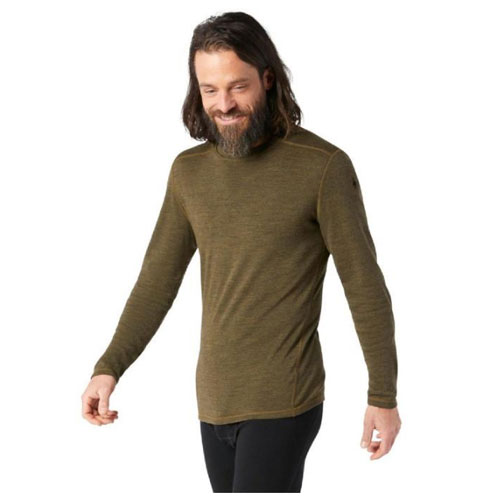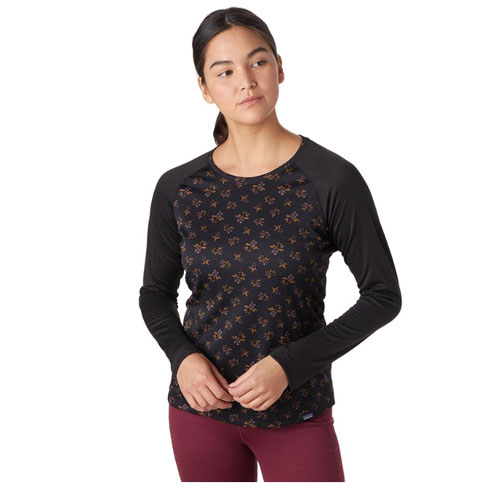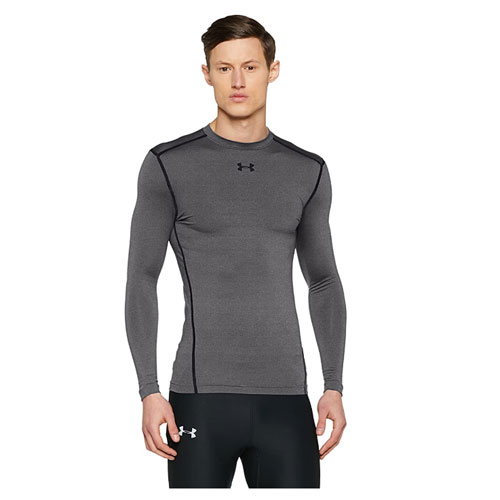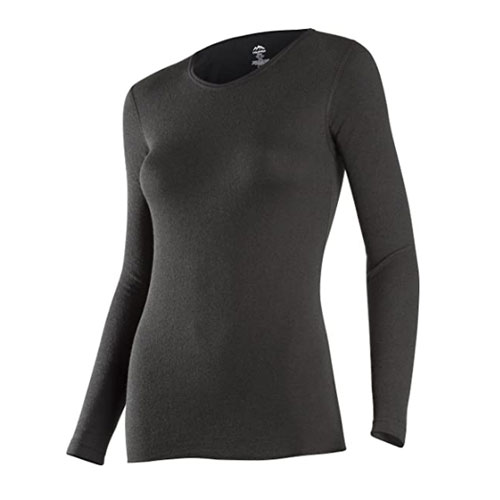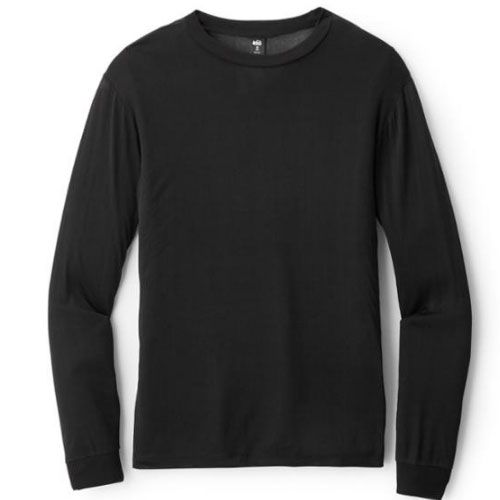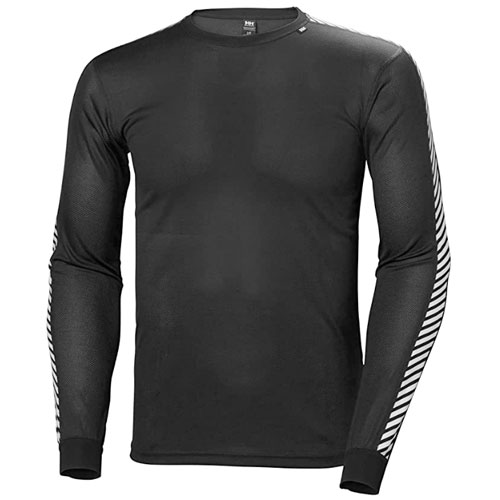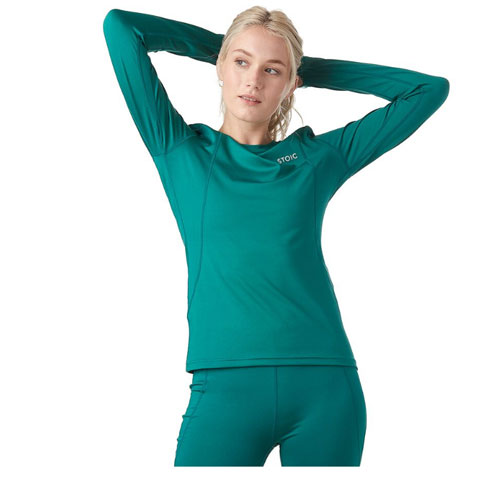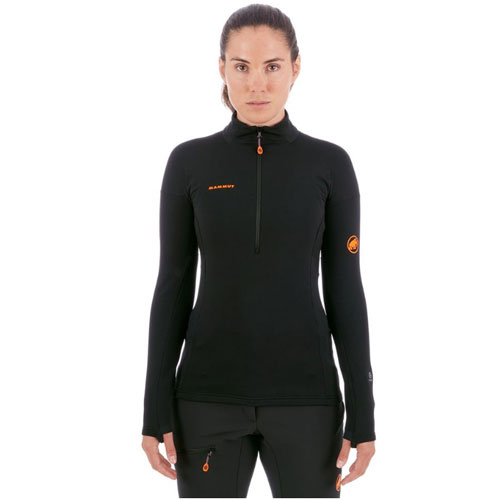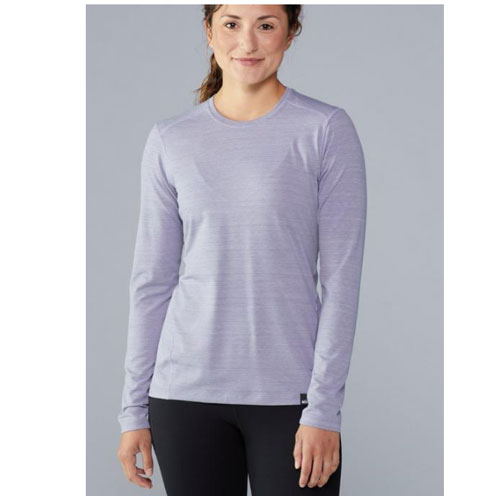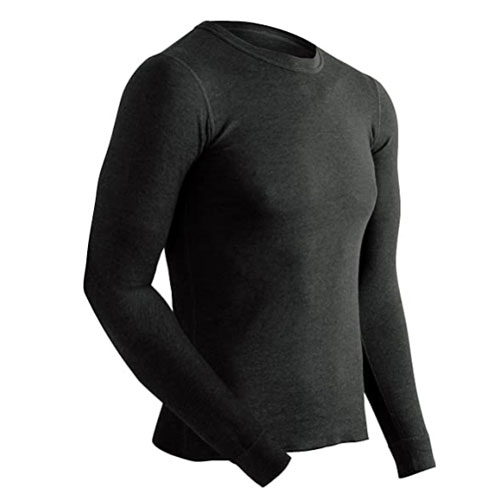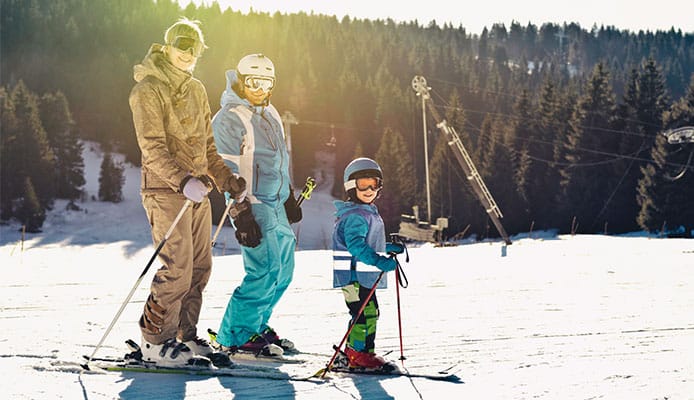
-
1.
-
2.
-
3.
-
4.
-
5.
When it comes to any outdoor activity, having the right gear plays a crucial role as there is always a thin line between a fantastic and terrible experience in the wilderness, and skiing or snowboarding is no exception. Understandably, ski jackets or ski pants are the most popular items to look for before hitting the slopes, however, what’s going to help you stay warm, though, is wearing the best wool base layer under all those cool-looking ski gear.
The market for ski base layers can be pretty intimidating at first glance, as there are a lot of styles and materials to choose from. That’s why we not only brought you the ski base layer reviews of some of our favorite brands but also prepared a comprehensive buying guide so that you can make a more informed decision.
OUR TOP PICK
Men’s Smartwool Merino 250
- Stand Out Features - Why We Love It
- Seamless shoulder panels increase the functionality
- Regulates body temperature
- Chic looking and can be worn for daily tasks in the winter
- Good odor resistance
Best For: Temperature Regulation, Multisport
Material: Merino Wool
Weight: Midweight
Color: Black, Military Olive, Neptune Blue/Deep Navy, Woodsmoke, Charcoal, Deep Navy
EDITORS CHOICE
Women’s Patagonia Capilene Midweight
- Stand Out Features - Why We Love It
- HeiQ treatment fights odor and keeps you fresh
- Allows a variety of usage
- Elastic thumb loops secure sleeves when you slip into a mid layer
- Perfect for keeping you warm during winter months
Best For: All-around Usage, Backcountry Skiing
Material: 100% recycled polyester, HeiQ Fresh Tech
Weight: Midweight
Color: Arctic Ox Geo/Classic Navy, Clover/Black, Steller Blue/Light Steller Blue X-Dye, Black, Migration/Smokey Violet
- Stand Out Features - Why We Love It
- ColdGear design makes sure you stay warm enough in the snow
- Won’t overheat as your activity level increases
- The 4-way stretch design makes sure that the layer isn’t constricting
- Available in men’s sizes as well as tall men’s sizes
- Good odor resistance
Best For: Warmth, Powder Snowboarding
Material: 87% Polyester, 13% Elastane
Weight: Lightweight
Color: White, Black, Midnight Navy, Carbon Heather, Royal, Red, Charcoal Light Heath
Women’s ColdPruf Basic Dual
- Stand Out Features - Why We Love It
- High quality layering system design helps trap heat and keep you warm
- Available in women’s sizes small to XX-large
- Flat seams and tagless labels remove any irritants
Best For: Cold Weather, New, and Intermediate Skiers
Material: 60% ring-spun cotton and 40% polyester
Weight: Midweight
Color: Black, Winter White
- Stand Out Features - Why We Love It
- Gives a luxurious feeling to the skin
- The rib-knit finish on the neck and cuffs
- Has almost no weight
Best For: High Insulation, Racing
Material: Silk jersey
Weight: Ultralightweight
Color: Quiet Shade, Black
Men’s Helly Hansen HH Dry Stripe
- Stand Out Features - Why We Love It
- Lifa stay dry technology pulls sweat out of the garment and wicks it away
- Hydrophobic fibers don’t absorb moisture
- Machine washable for easy care
Best For: Dry Technology, Professional Spring Skiing
Material: Polypropylene
Weight: Lightweight
Color: White, Black, Deep Blue/Neon Yellow, Racer Blue, Evening Blue, Ebony/Neon Orange
- Stand Out Features - Why We Love It
- Next-to-skin fit for optimal warmth
- Ideal for midwinter powder days
- Polyester construction is breathable and sweat-wicking
Best For: Moisture Wicking, Midwinter Snowshoe Hiking
Material: 85% polyester, 15% spandex
Weight: Midweight
Color: Deep Sea, Black
- Stand Out Features - Why We Love It
- Merino wool repels odors for a long time
- Ideal for Alpine travel due to abrasion-resistant face fabric
- Stretches and manages moisture
Best For: Abrasion-resistance, Alpine Pursuits
Material: Pontetorto Tecnostretch (49% polyester, 41% nylon, 10% elastane), Pontetorto Merino Tecnowool (52% polyester, 36% merino wool, 12% nylon)
Weight: Heavyweight
Color: Black
- Stand Out Features - Why We Love It
- Offers UPF 50+ sun protection
- Reduced chafing and bulking due to flat seam construction
- Delivers a flexible range of motion
Best For: Sun Protection, Climbing
Material: 92% polyester/8% spandex
Weight: Midweight
Color: Black/Asphalt, Lilac Dusk/Lavender Aura, Mineral Water Heather, Twilight Purple Heather, Birch White Heather
Men’s ColdPruf Platinum II Performance
- Stand Out Features - Why We Love It
- Drop tail hem helps to make sure that the garment won’t roll up
- Works well in the cold and extreme cold without being a heavyweight option
- Available in standard men’s sizes as well as tall men’s sizes
- Odor resistant and keep moisture away
Best For: Odor Control, Low to Medium Activity
Material: 100% polyester (inside), 70% polyester, 30% merino wool (outside)
Weight: Midweight
Color: Black, Heather Grey
How To Choose A Base Layer For Skiing – Buying Guide
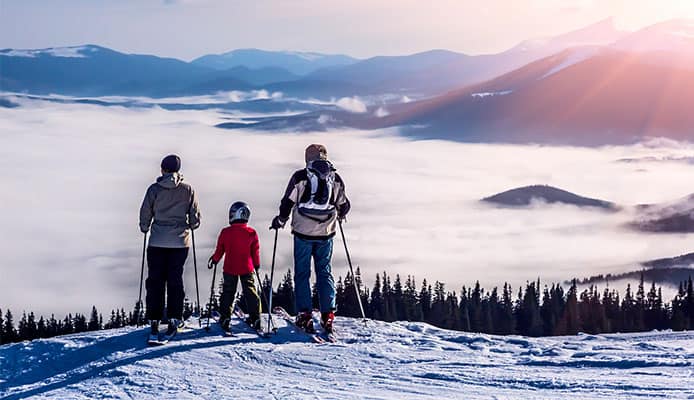
Type
There are three main styles of ski base layers: jackets, shirts, and blouses. A jacket is an underlayer that zips up while a shirt is pulled over your head to wear and doesn’t always feature a zipper. Blouse-style base layers are similar to shirt-style base layers but they have a looser fit.
Material
Let’s start with the most popular material first – merino wool. Wool is a natural fiber rather than synthetic and it comes with a lot of attractive features. For one, it offers great odor control. It can even go through several uses before it accumulates an unpleasant smell. It also wicks away moisture well. The biggest drawback though is that they’re among the most expensive options. While the material is durable, synthetic fabrics do surpass it in durability.
The second most common choice is synthetic fabric polyester. These fibers are made to be moisture-wicking, so they’re particularly popular in the sportswear market. The manufacturing of the polyester fabric itself has a large impact on how well it wicks moisture away but many companies also use a coating to increase the effect.
Polyester skiing base layers are often mixed with nylon or spandex. These help to increase how well the underlayer stretches to give you a tight, form-fitting underlayer. While less expensive than wool, the synthetic material collects body odor quickly.
Today, silk layers are usually treated to offer better odor control and increased moisture-wicking properties. The biggest disadvantage of silk is that it’s very fragile. It has to be hand washed and you can’t put it in the dryer either.
Weight
Different manufacturers have different descriptions but in general, you can break these sizes down to lightweight, midweight, and heavyweight base layers.
A lightweight underlayer is best for skiing in the spring as it won’t feel too heavy. Advanced or professional skiers also prefer this type because even when it’s cold out, high levels of exertions raise their body heat.
Midweight base layers are the happy medium between heavy and light base layers. The best choice for most average skiers, these work well to keep you warm during moments of inactivity such as when you’re riding a chairlift. On the other hand, they don’t leave you uncomfortable or overheated when you’re skiing.
Heavyweight layers are very thick, are the warmest underlayers, and they typically wick away moisture very well. These are only meant for low temperatures with low levels of activity. Otherwise, you’re likely to overheat quickly.
Warmth
As we’ve mentioned at this point, weight and warmth go hand in hand. But, to choose the right layer, you have to know the level of warmth you need. There are a few factors to consider.
First, you’ll want to consider the weather. Don’t make the mistake of thinking that the presence of snow means you need thick layers at all times.
The other factor to consider is your level of activity. If you’re taking simple, light-hearted paths, you don’t have to worry about getting overheated. Unless your level of activity is incredibly low, you want to lean towards midweight layers.
If you plan on taking more intense, challenging slopes, you want to look for a lightweight option. These will keep you warm enough but they won’t make you uncomfortably warm or cause you to overheat as you ski.
Breathability
Top-rated underlayers for skiing are made with breathability in mind. Synthetic materials and wool, in particular, are great choices when it comes to airflow. However, a base-layer can only do so much. Therefore, it’s a good idea to be on the lookout for top layers that complement the need for breathability. Inner leg and armpit zips are a couple of key features. This also helps the moisture your base-layer is wicking off of you to evaporate.
You might also like: Perfect Ski Racks
Drying Speed
Some fabrics dry faster than others. Synthetic materials such as polyester and nylon dry the fastest. Wool, on the other hand, takes a little longer to dry but it isn’t unmanageable. Drying speed is the main reason you want to avoid the rare cotton snowboarding underlayers as cotton takes a notoriously long time to dry completely.
Layering Ability
Make sure that your underlayer is not too thick so that you won’t have trouble using a layer on top of it. Your base-layer for snowboarding should also fit tight with stretch so that it won’t restrict your movement when you’re taking on a high-energy sport.
Durability
Among the materials we’ve discussed here, synthetic fibers win out on durability. Specifically, nylon underlayers are the strongest choice with polyester trailing not too far behind. Merino wool does have less durability than synthetics but it’s a much stronger choice than silk.
Fit
You don’t want something too loose because a baggy underlayer doesn’t offer the same warmth. It also will fit awkwardly underneath a top layer. However, as we’ve mentioned, you don’t want something suffocatingly tight either.
Again, synthetic fabrics are the best choice for this stretchy and breathable but tight fit. Keep an eye out for flat seams too. This minimizes problems like chafing. It can also be helpful to look for garments with other convenient features like high necks for warmth or thumb loops to keep your sleeves in place. Long sleeves, long cuffs, and a long back keep you warm.
FAQs
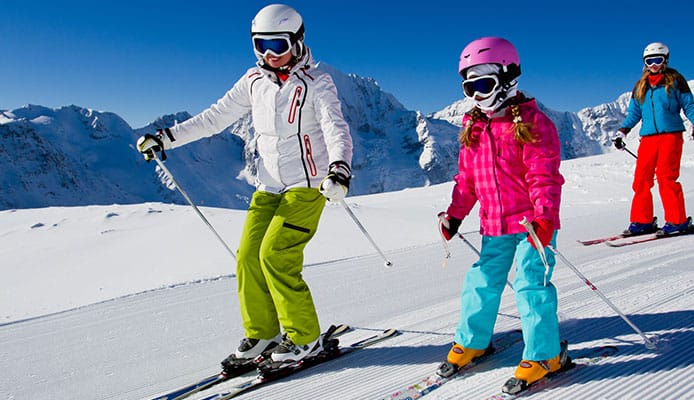
Q: What thickness base layer do I need?
Lightweight layers are made for moderate temperatures which make them a great choice for spring. Midweight layers are made for cooler temperatures, so they work well through most of the winter. Heavyweight layers are meant to be used in temperatures below freezing. If you wear it in warmer weather, you risk overheating.
Aside from the weather, you need to think about your skill level and plans. Ultra-lightweight or featherweight is incredibly light and usually only work well for serious skiers who are highly exerting themselves on intense slopes. If you will be taking more casual paths, opt for a midweight under layer.
Q: Should my base layer be skin tight?
The truth is that you want something tight enough to sit right against your skin but not so tight that it’s restrictive or uncomfortable. This is why the best base layers snowboarding use materials that have a little stretch and lots of breathability.
Q: How to clean and store my base layer when not in use?
You should clean your underlayer at least one time during the season with standard soap. After that, make sure it is completely dry and then use a waterproof sealant to maintain the moisture-wicking properties. When the season is over, it’s not a bad idea to pick up some soap treated with a water repellent specifically for ski gear.
Many manufacturers also give you recommended care instructions, too.
Q: What other activities can I use my base layer for?
The best cold-weather underlayer can be used for any wintertime activity such as chopping wood, shoveling snow, or wintertime jogging.
Globo Surf Overview
Without a good, high-quality underlayer, you will feel the chilly air of the slopes quickly. Not only that, you will miss out on the moisture-wicking effect and there won’t be anything to handle body odor.
When you are purchasing a ski underlayer, it’s important to find what’s best for you. This means considering fit, style, and several other features. All of the options we’ve looked at on this list are some of the best underlayers for ski and hopefully one of them will work out for you.
More Snow Ski Gear Reviews:
- Ski Pants
- Cross Country Ski Gloves
- Skiing Books
- Backcountry Ski Bindings
- Women Ski Boots
- Cross Country Ski Boots
- Women’s Skis
- Watches For Skiing
- Ski And Snowboard Tuning Vises
- Ski And Snowboard Wall Racks
- Kids Ski Helmets
- Ski Gloves For Kids
- Photochromic Ski Goggles
- Ski Boots For Kids
- Kids Ski Poles
- Ski Boots For Narrow Feet


